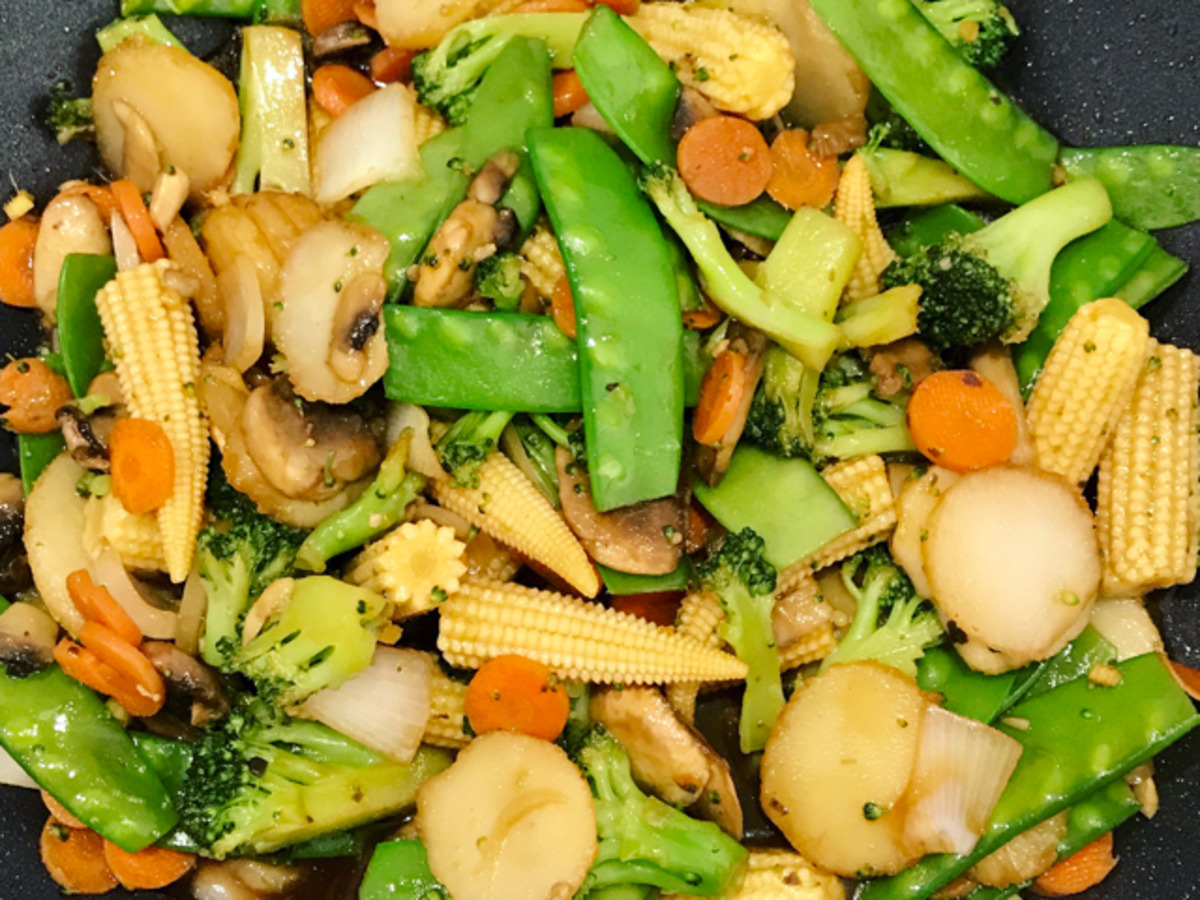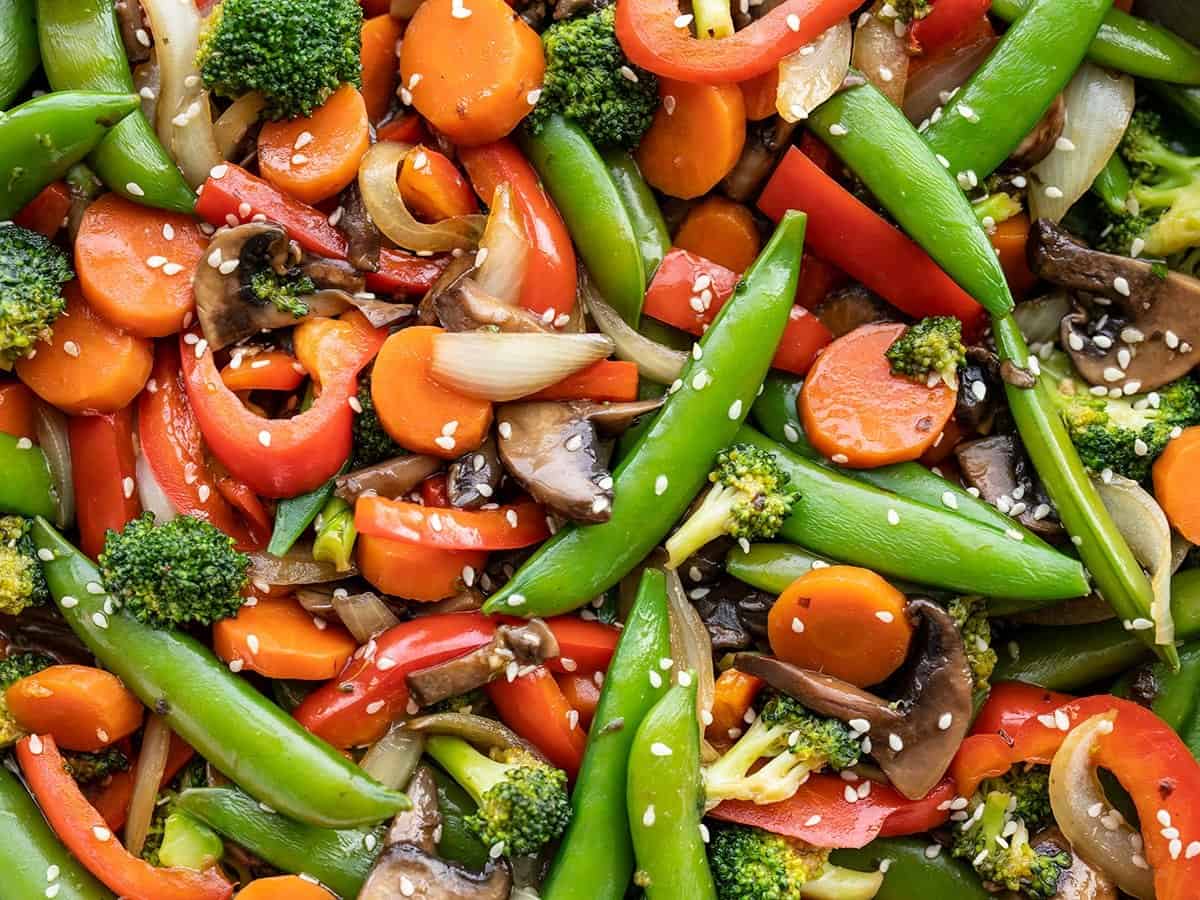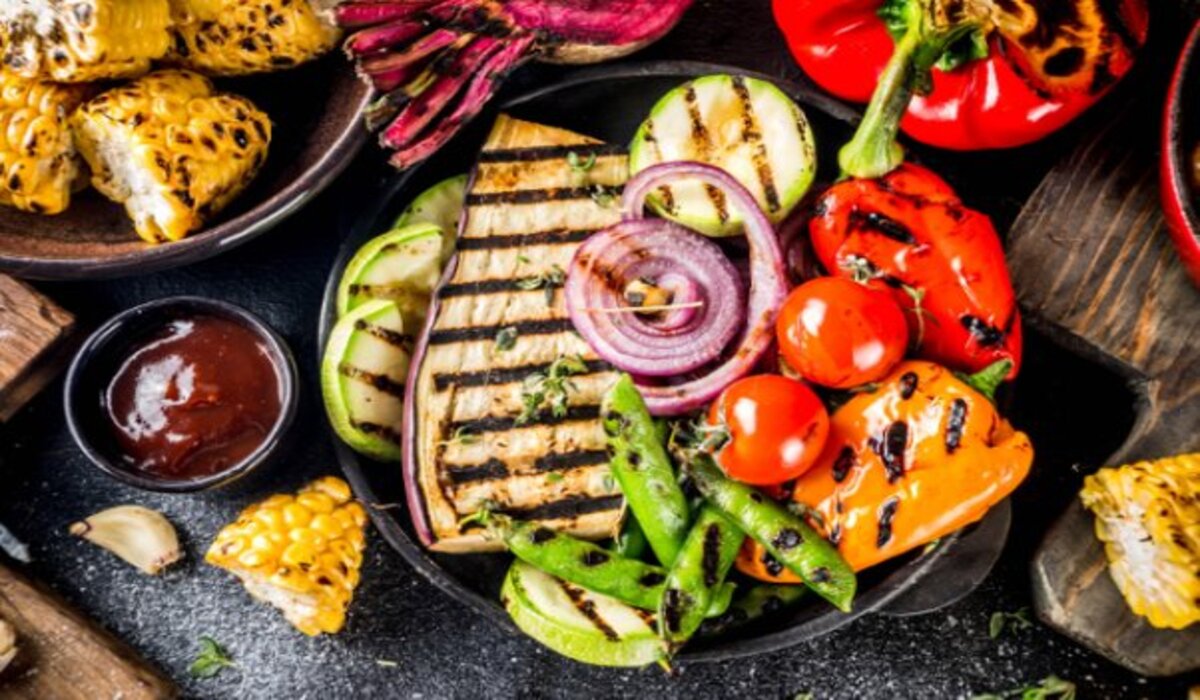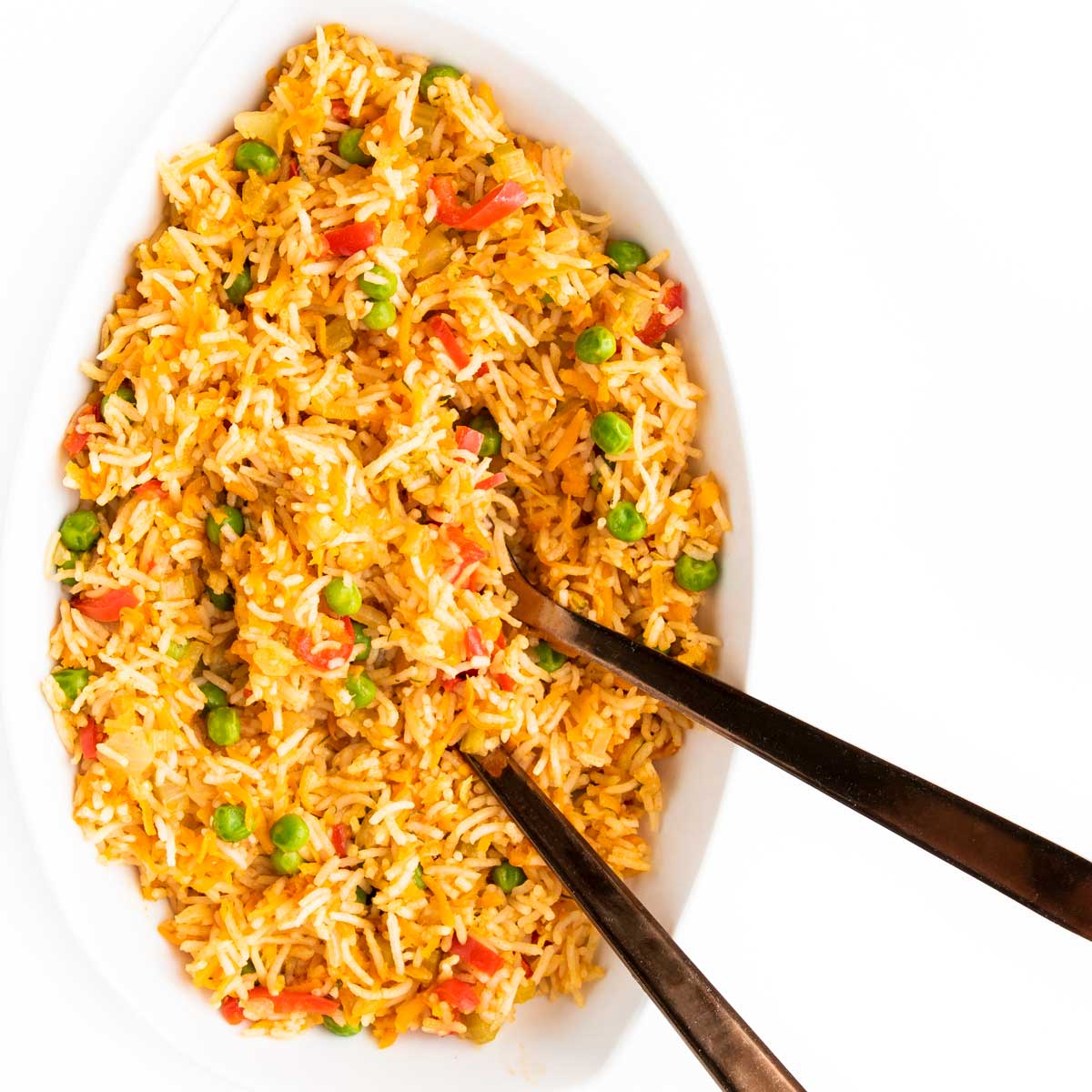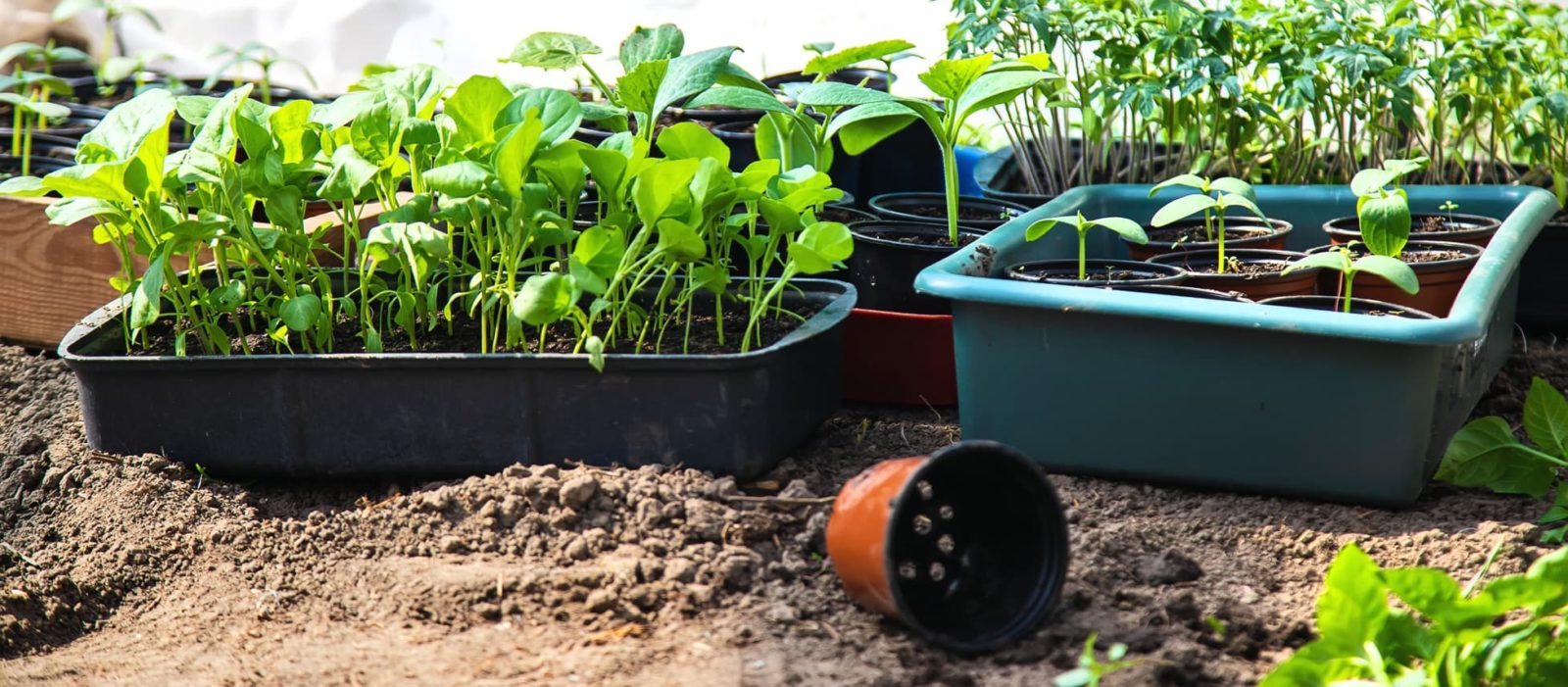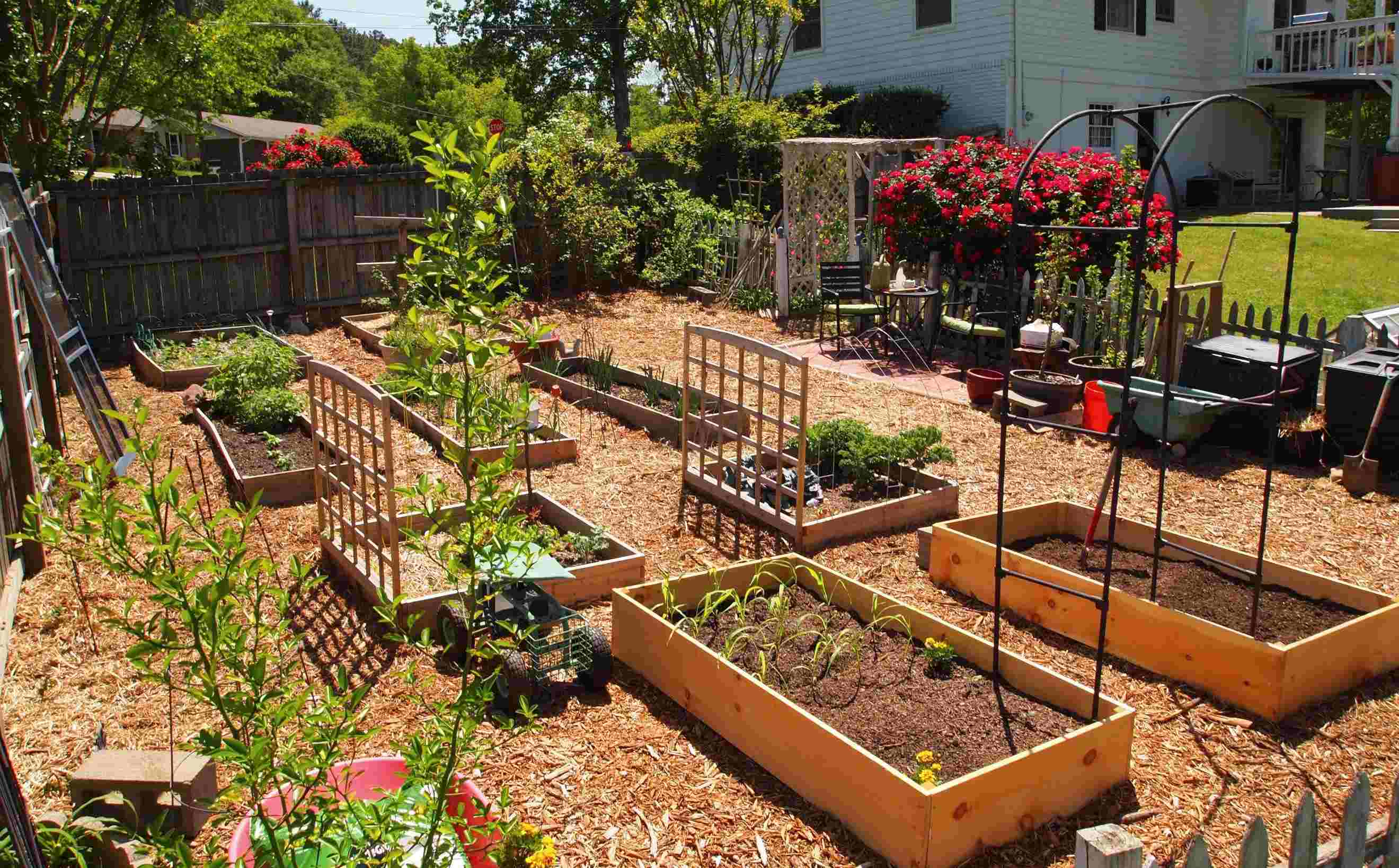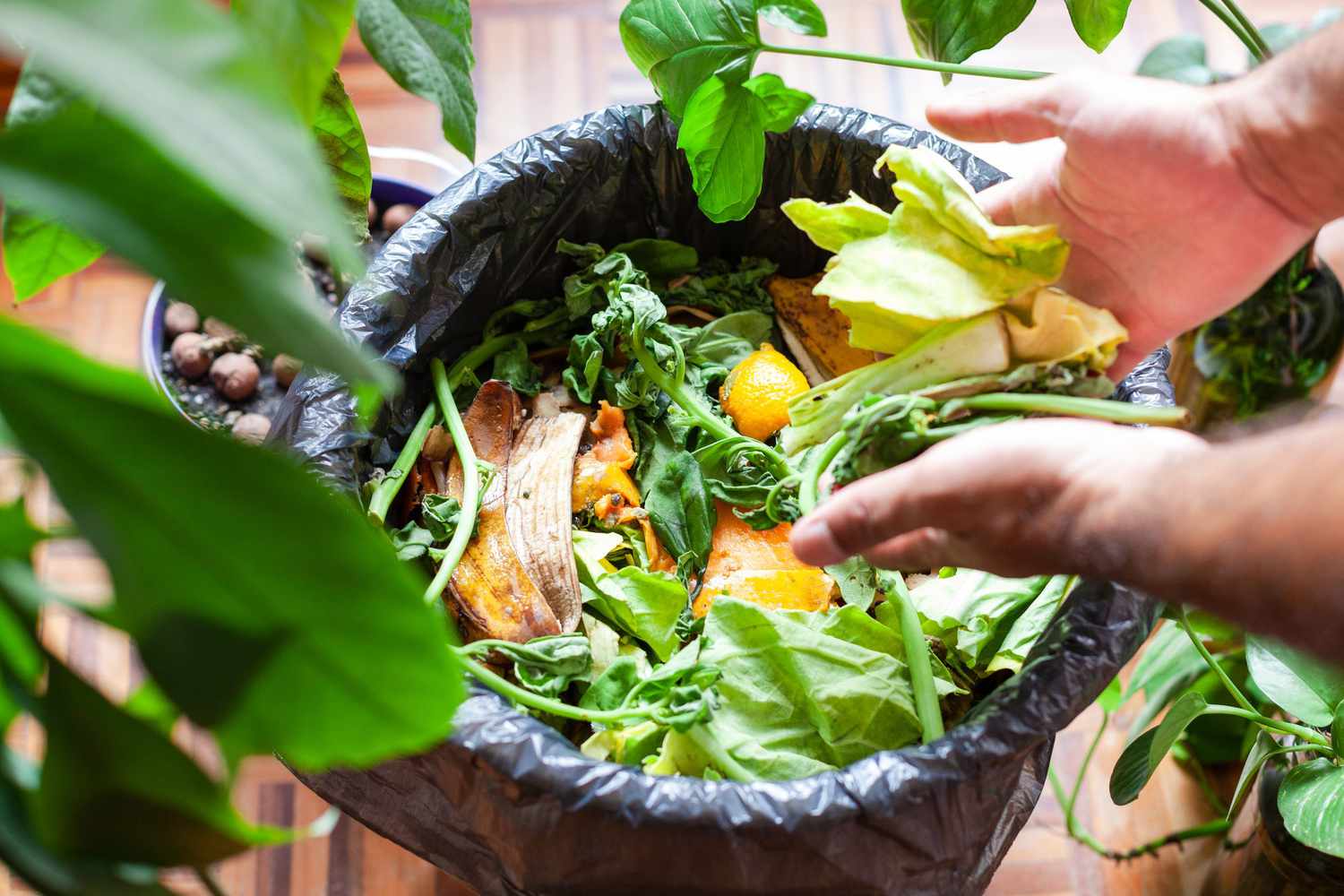Home>Gardening News and Trends>Latest News>What Vegetables Make You Bloated
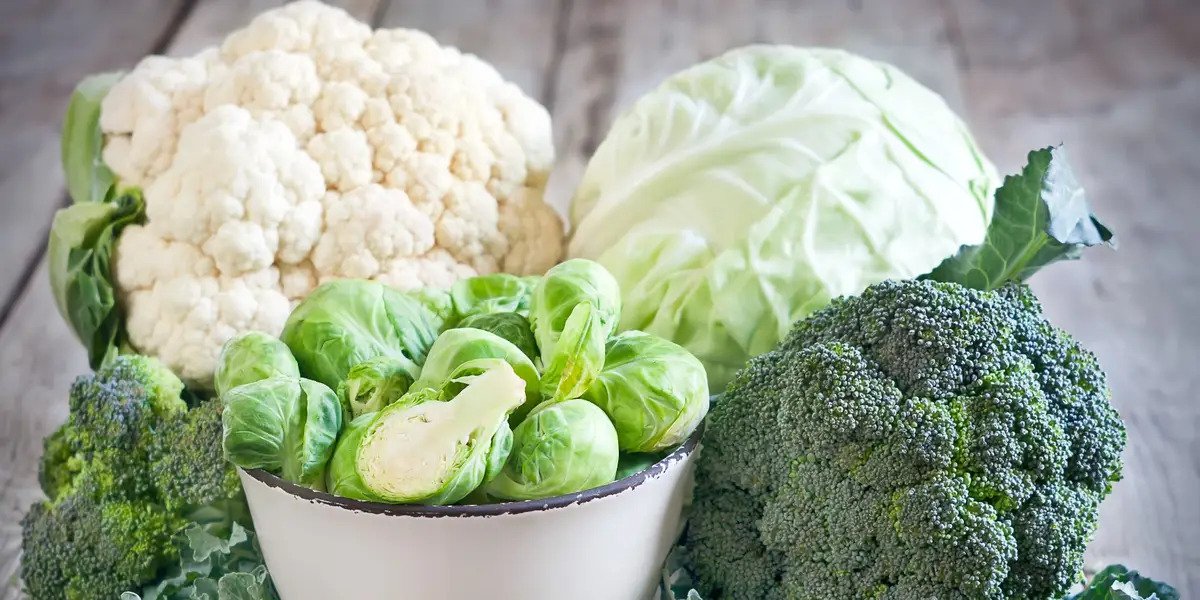

Latest News
What Vegetables Make You Bloated
Published: October 5, 2023
Discover the latest news on which vegetables make you feel bloated. Find out how to avoid discomfort and enjoy a healthier digestive system.
(Many of the links in this article redirect to a specific reviewed product. Your purchase of these products through affiliate links helps to generate commission for Chicagolandgardening.com, at no extra cost. Learn more)
Table of Contents
Introduction
Bloating is an uncomfortable sensation that many of us have experienced at some point in our lives. Whether it’s after a big meal or due to certain foods, bloating can leave us feeling sluggish and uncomfortable. While there are various factors that can contribute to bloating, including digestive disorders and food sensitivities, certain vegetables have a reputation for causing bloating.
In this article, we will explore the relationship between vegetables and bloating. We will examine the common vegetables that are known to cause bloating, such as cruciferous vegetables, onions, garlic, legumes, and high-fiber vegetables. Additionally, we will discuss strategies to reduce bloating from vegetables, allowing you to continue enjoying their health benefits without the discomfort.
It’s important to note that while certain vegetables may cause bloating in some individuals, everyone’s digestive system is unique. What causes bloating for one person may not affect another in the same way. Thus, it’s essential to pay attention to your body’s individual response and make adjustments accordingly.
Now, let’s delve into the world of vegetables and explore how they can affect bloating.
Understanding Bloating
Bloating is a common symptom characterized by a feeling of fullness or tightness in the abdomen. It is often accompanied by gas, discomfort, and sometimes pain. While bloating can have several causes, it is primarily attributed to the buildup of gas in the digestive system.
When we eat, our bodies break down food through the process of digestion. During this process, gas is produced as a byproduct. This gas can accumulate in the stomach and intestines, leading to bloating. Additionally, swallowed air, such as when we eat quickly, drink carbonated beverages, or chew gum, can also contribute to bloating.
There are various factors that can influence the severity and frequency of bloating, including individual differences in gut bacteria, digestion speed, and sensitivity to certain foods. For some individuals, certain vegetables can trigger bloating more than others.
It’s important to note that not all bloating is a cause for concern. Occasional and mild bloating is a normal part of the digestive process. However, if you experience persistent or severe bloating, it is essential to consult with a healthcare professional to rule out any underlying digestive disorders or medical conditions.
Now that we have a better understanding of bloating, let’s explore the vegetables that are commonly associated with causing bloating.
Common Vegetables that Cause Bloating
While vegetables are an essential part of a healthy diet, some may have a reputation for causing bloating. It’s important to note that not everyone will experience bloating from these vegetables, and the severity of symptoms can vary from person to person. However, if you are prone to bloating, it may be helpful to be aware of these vegetables and their potential effects:
- Cruciferous Vegetables: Vegetables such as broccoli, cauliflower, cabbage, Brussels sprouts, and kale belong to the cruciferous family. They are known for their numerous health benefits, including being rich in vitamins, minerals, and fiber. However, these vegetables also contain complex sugars called raffinose, which can be difficult for some individuals to digest. As a result, they may cause gas and bloating.
- Onions and Garlic: Onions and garlic are staples in many cuisines and are valued for their flavor and culinary versatility. However, they contain a type of carbohydrate called fructans, which can be challenging to digest for some people. This can lead to bloating and other digestive discomforts.
- Legumes: Legumes like beans, lentils, and chickpeas are excellent sources of plant-based protein and fiber. However, they also contain oligosaccharides, a type of carbohydrate that can be challenging to digest. This can result in increased gas production and bloating.
- High-Fiber Vegetables: Vegetables that are high in fiber, such as artichokes, asparagus, and broccoli, can promote digestive health. However, for individuals with sensitive digestive systems, consuming large amounts of high-fiber vegetables can lead to bloating. It is important to gradually increase fiber intake and drink plenty of water to help the body adjust.
It’s essential to note that cooking methods can sometimes help reduce the bloating effects of these vegetables. For example, steaming or sautéing cruciferous vegetables can make them easier to digest compared to raw consumption. Additionally, soaking and properly cooking legumes can help reduce the bloating potential.
Now that we have identified some common vegetables that may cause bloating, let’s explore the effects of specific vegetables in more detail.
Cruciferous Vegetables and their Bloating Effects
Cruciferous vegetables, including broccoli, cauliflower, cabbage, Brussels sprouts, and kale, are highly nutritious and packed with vitamins, minerals, and fiber. However, they can also be culprits for causing bloating in some individuals.
These vegetables contain a complex sugar called raffinose, which is known to be difficult for some people to digest. Raffinose passes through the upper part of the digestive system without being broken down by enzymes. When it reaches the large intestine, it becomes food for gut bacteria, which produce gas as a byproduct. This can result in bloating and flatulence.
For those prone to bloating, there are strategies to still enjoy the health benefits of cruciferous vegetables while minimizing discomfort:
- Cooking Techniques: Cooking cruciferous vegetables can help break down the complex sugars and make them easier to digest. Steaming, roasting, or sautéing cruciferous vegetables can help reduce their bloating effects compared to consuming them raw.
- Portion Control: Instead of consuming large amounts of cruciferous vegetables in one sitting, start with smaller portions and gradually increase over time. This allows your digestive system to adapt and may minimize bloating.
- Pairing with Digestive Spices: Adding digestive spices like ginger or fennel to your cruciferous vegetable dishes can help enhance digestion and reduce the potential for bloating.
- Proper Chewing and Slow Eating: Taking the time to chew your food thoroughly and eating slowly can aid in the digestion of cruciferous vegetables and reduce the chances of bloating.
Remember, everyone’s tolerance to cruciferous vegetables is different. You may need to experiment with different cooking methods and portion sizes to find what works best for you. Pay attention to your body’s responses and make adjustments accordingly.
Now, let’s explore the effects of onions and garlic on bloating.
Onions, Garlic, and Bloating
Onions and garlic are beloved ingredients in many cuisines worldwide, adding flavor and depth to dishes. However, they contain a type of carbohydrate called fructans, which can contribute to bloating and gas in certain individuals.
Fructans are a type of fermentable fiber that can be challenging to digest for some people. When these carbohydrates reach the large intestine, they are fermented by gut bacteria, producing gas as a byproduct. This fermentation process can lead to bloating, discomfort, and flatulence.
If you experience bloating from onions and garlic, there are strategies to still enjoy their flavors while minimizing the unpleasant side effects:
- Preparation Techniques: Sautéing or cooking onions and garlic can help break down the fructans, making them easier to digest. The longer you cook them, the more the fructans break down, reducing the likelihood of bloating.
- Limited Consumption: Instead of completely eliminating onions and garlic from your diet, try consuming them in smaller quantities. This can help minimize bloating while still enjoying their taste.
- Substitutes: If you find that onions and garlic consistently cause bloating for you, consider using alternative flavorings such as herbs, spices, or low-FODMAP options like chives or garlic-infused oil, which may be better tolerated.
- Digestive Supplements: Digestive enzymes or over-the-counter supplements, specifically designed to aid in the digestion of complex carbohydrates, may be helpful for some individuals in reducing the bloating associated with onions and garlic.
It’s important to note that individual tolerances can vary, and some people may be more sensitive to fructans than others. Pay attention to your body’s response and adjust your intake accordingly.
Now that we understand the effects of onions and garlic, let’s explore the relationship between legumes and bloating.
Legumes and Bloating Issues
Legumes, including beans, lentils, and chickpeas, are highly nutritious and a great source of plant-based protein, fiber, and other essential nutrients. However, they are also known for causing bloating and gas in some individuals.
Legumes contain a type of carbohydrate called oligosaccharides, which are resistant to digestion in the small intestine. When these carbohydrates reach the large intestine, gut bacteria ferment them, producing gas as a byproduct. This can lead to bloating, flatulence, and discomfort.
If legumes tend to cause bloating for you, there are several strategies you can try to minimize the effects:
- Soaking and Cooking: Soaking dried legumes before cooking can help reduce the oligosaccharide content, making them easier to digest. Additionally, thoroughly cooking legumes can further break down the complex carbohydrates and reduce bloating potential.
- Gradual Increase in Consumption: If you are not accustomed to consuming legumes, it’s best to introduce them gradually into your diet. Start with small portions and increase the amount slowly over time, allowing your body to adjust and minimize bloating.
- Pairing with Digestive Spices: Adding digestive spices such as cumin, ginger, or fennel to your legume dishes can help improve digestion and reduce bloating.
- Consider Canned or Precooked Options: Canned legumes or precooked varieties may be easier to digest compared to dried legumes. If bloating is a significant concern, these options could be a more suitable choice.
- Enzyme Supplements: Over-the-counter enzyme supplements that aid in the digestion of complex carbohydrates, such as alpha-galactosidase, may be beneficial for some individuals in reducing bloating from legumes.
Remember that everyone’s tolerance to legumes varies. Some people may be more sensitive to oligosaccharides than others. It’s essential to listen to your body and choose legume options that work best for you.
Now, let’s explore the effects of high-fiber vegetables on bloating.
High-Fiber Vegetables and Bloating
High-fiber vegetables, such as artichokes, asparagus, and broccoli, are an excellent addition to a healthy diet. They provide essential nutrients and contribute to digestive health. However, for individuals with sensitive digestive systems, consuming large amounts of high-fiber vegetables can lead to bloating.
Fiber is an indigestible substance that adds bulk to our stool and helps regulate bowel movements. However, some types of fiber, particularly soluble fiber, can ferment in the colon, causing gas and bloating.
If you find that high-fiber vegetables tend to cause bloating for you, here are some strategies to consider:
- Cooking Methods: Cooking high-fiber vegetables can help break down the fiber and make them easier to digest. Steaming, roasting, or sautéing these vegetables may result in less bloating compared to consuming them raw.
- Portion Control: Instead of consuming large quantities of high-fiber vegetables in one sitting, try spreading them out throughout the day or incorporating them into different meals. Moderation can help minimize bloating while still benefiting from their nutritional value.
- Pairing with Digestive Enzymes: Taking digestive enzyme supplements that aid in the breakdown of fiber, such as alpha-galactosidase, can help reduce bloating and discomfort associated with high-fiber vegetables.
- Increasing Fiber Intake Gradually: If you’re not accustomed to a high-fiber diet, it’s important to gradually increase your fiber intake to allow your digestive system to adjust. This can help minimize bloating and other digestive discomforts.
- Stay Hydrated: Drinking enough water is crucial when consuming high-fiber vegetables. Adequate hydration helps fiber move through the digestive system smoothly and can prevent excessive gas and bloating.
Keep in mind that the effects of high-fiber vegetables on bloating can vary among individuals. It’s important to pay attention to your body’s responses and adjust your intake accordingly.
Now that we have explored the effects of various vegetables on bloating, let’s discuss strategies to reduce bloating from vegetables altogether.
Strategies to Reduce Bloating from Vegetables
Experiencing bloating after consuming vegetables can be uncomfortable, but there are strategies you can implement to help reduce bloating and still enjoy the nutritional benefits of these foods. Here are some effective strategies:
- Cooking Techniques: Certain cooking techniques can help break down the complex sugars and fibers in vegetables, making them easier to digest. Steaming, sautéing, or roasting vegetables can help reduce their bloating effects compared to consuming them raw.
- Chew Thoroughly: Taking the time to chew your food thoroughly can aid in the digestion process. Chewing breaks down the food into smaller particles, making it easier for the digestive system to process and reducing the likelihood of bloating.
- Pair with Digestive Spices: Adding digestive spices such as ginger, cumin, or fennel to your vegetable dishes can help improve digestion and reduce the risk of bloating. These spices possess natural digestive properties and can help alleviate discomfort.
- Manage Portion Sizes: Moderation is key. Pay attention to your portion sizes and avoid consuming excessive amounts of vegetables in one sitting. Spacing out vegetable intake throughout the day can also help minimize bloating.
- Gradual Increase in Fiber: If you’re increasing your fiber intake, whether through vegetables or other dietary sources, do it gradually. This allows your digestive system to adjust and reduces the likelihood of bloating. Make sure to drink plenty of water to support proper fiber digestion.
- Identify and Avoid Trigger Foods: Keep a food diary and note which vegetables or specific varieties tend to cause bloating for you. Everyone’s tolerance can vary, so identifying your trigger foods can help you make informed choices and reduce discomfort.
- Consider Digestive Supplements: Digestive enzyme supplements or over-the-counter remedies designed to aid digestion, such as simethicone, may be helpful in reducing bloating from vegetables. Consult with a healthcare professional to determine if these supplements are suitable for you.
Remember, these strategies may not work for everyone, as individual responses to foods can vary. It’s important to listen to your body, make dietary adjustments that suit your needs, and consult with a healthcare professional if you experience persistent or severe bloating.
Now that we have explored strategies to minimize bloating from vegetables, let’s wrap up our discussion.
Conclusion
Bloating from vegetables can be a common complaint for many individuals. While certain vegetables, such as cruciferous vegetables, onions, garlic, legumes, and high-fiber vegetables, may be more likely to cause bloating, it’s important to remember that everyone’s digestive system is unique. What causes bloating in one person may not affect another in the same way.
However, there are strategies you can implement to reduce bloating while still enjoying the nutritional benefits of vegetables. Cooking techniques, such as steaming, sautéing, and roasting, can make vegetables easier to digest. Chewing your food thoroughly, gradually increasing fiber intake, and managing portion sizes are also effective methods to minimize bloating. Additionally, pairing vegetables with digestive spices and considering digestive supplements may provide relief for some individuals.
It’s essential to pay attention to your body’s response to different vegetables and make adjustments accordingly. Keep in mind that if you experience persistent or severe bloating, it’s crucial to consult with a healthcare professional to rule out any underlying digestive disorders or medical conditions.
By being mindful of your body’s individual needs and incorporating these strategies, you can continue to enjoy the numerous health benefits of vegetables while reducing discomfort and bloating.
